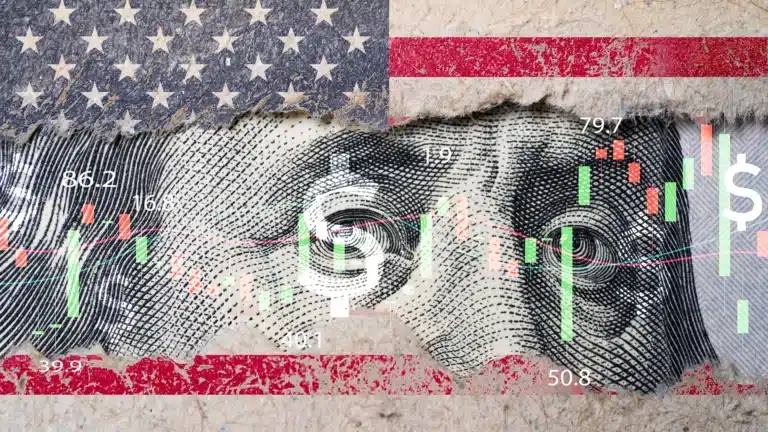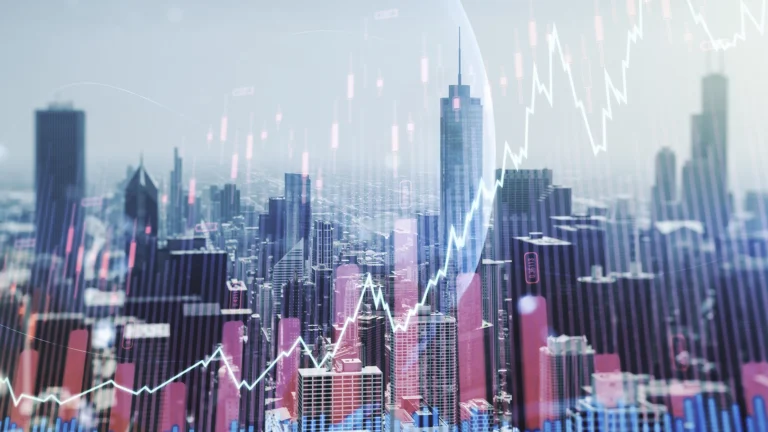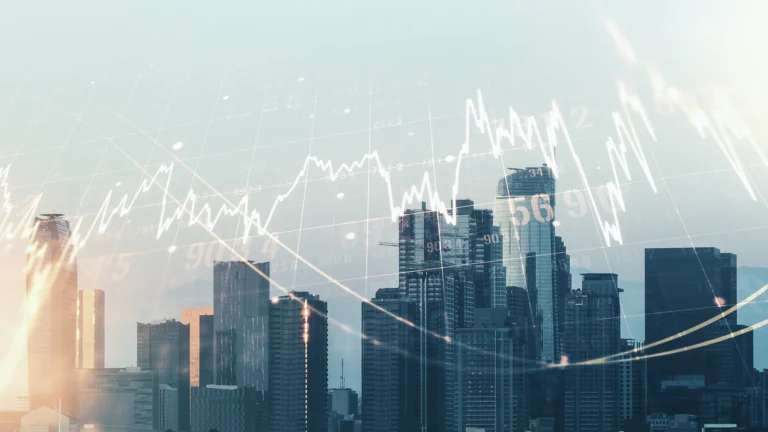|
Getting your Trinity Audio player ready...
|
Have you heard the term “recession” thrown around in the news or conversations, but are unsure of what it means?
A recession is a term that is often used in discussions about the economy, but its definition and implications can be confusing. It is a period of economic decline where there is a significant decrease in economic activity, which can lead to job losses, reduced consumer spending, and a downward spiral in the stock market.
An economic recession is defined as a period of broad economic decline, marked by negative growth in key macroeconomic indicators, and is a significant topic in economic policy discussions.
Understanding what a recession is and how it affects the economy is crucial for individuals and businesses alike.
In this article, we will explore the definition of a recession, its causes, and its impact on the economy and everyday life. A key characteristic of a recession is the decline in economic output, such as a drop in gross domestic product (GDP), which often correlates with lower employment and production.
Economic Recession
An economic recession is a significant decline in economic activity across the economy lasting more than a few months, typically marked by two consecutive quarters of negative gross domestic product (GDP) growth, rising unemployment, and reduced consumer spending.
Table of Contents
- Economic Recession
- What is an Economic Recession?
- What Causes Recessions and Changes in Gross Domestic Product?
- What’s the Difference Between a Recession and a Depression?
- How Long Do Recessions Last?
- Can You Predict a Recession?
- Recession Indicators
- Central Banks and Monetary Policy
- Global Economy and Trade
- Stock Market and Investor Confidence
- Responses to Recessions
- How Does a Recession Affect Me and Consumer Spending?
- Conclusion
- Frequently Asked Questions (FAQ) About Economic Recession
- What is economic recession?
- How long does a recession typically last?
- What causes a recession?
- How is a recession officially declared?
- What is the difference between a recession and a depression?
- How do recessions affect consumer spending and employment?
- What role do fiscal and monetary policies play during a recession?
- Can recessions be predicted?
- Are all sectors equally affected by a recession?
- How can individuals prepare for a recession?
What is an Economic Recession?
A recession is a period when the economy declines significantly. It is usually defined as two consecutive quarters of negative growth in the gross domestic product (GDP), with negative GDP growth serving as a key indicator.
GDP growth rates are central to the technical definition of a recession, as sustained declines signal broader economic trouble.
A recession involves a significant decline in overall economic activity in a designated geographic area. It is traditionally considered two consecutive quarters of economic downturn, reflected by GDP and indicators such as rising unemployment and declines in real income.
The National Bureau of Economic Research (NBER), which officially declares recessions, has updated its definition of recession. The NBER now defines a recession as a significant decline in overall economic activity spread throughout the economy lasting more than a couple of months.
In making this assessment, the NBER also considers labor statistics, such as those from the Bureau of Labor Statistics, to evaluate the impact on employment and the broader economy.
Recessions and the Business Cycle
Business cycles are recurring phases of expansion and contraction in the economy. During an economic expansion, the economy sees healthy and sustainable growth. Over time, lenders become more willing to lend money, which encourages consumers and businesses to take out more loans.
Financial factors such as credit growth, financial risks, and monetary policy play a significant role in influencing the business cycle. What follows is irrational exuberant behaviour which begins to overtake asset prices.
As the economic expansion continues to mature, asset values continue to rise more rapidly and debt loads continue to increase. At some point during an economic expansion, one of these phenomena derails the expansion. Shock bursts and asset bubbles cause large debts to become too expensive to maintain.
The buildup of financial risks during expansions, such as excessive leverage and systemic vulnerabilities, can trigger downturns. This causes the stock market to crash. Declines in equity markets often precede recessions and can signal changes in investor sentiment. As a result, economic growth contracts and the economy goes into a recession.
If you’re an investor, one of the best things to do during a recession is to look for companies with low debt, strong cash flow, and strong financials. Avoid companies that are highly leveraged, cyclical, and speculative. Bear markets often follow economic downturns and can present both risks and opportunities for investors.
The Great Depression
The Great Depression began in 1929 and ended in 1933, but the economy didn’t begin to recover until World War II, almost a decade later. The recession began with the stock market crash in October 1929, marking the onset of a prolonged economic downturn.
Unemployment reached 25% during the Great Depression, and the economy contracted by 30%. Both the public and private sectors were severely affected by the downturn, with widespread job losses and business failures. It was the most unprecedented economic crash in modern American history.
Great Depression and the Great Recession
The Great Depression began in 1929 and ended in 1933, but the economy didn’t begin to recover until World War II, almost a decade later. The recession began with the stock market crash in October 1929, marking the onset of a prolonged economic downturn.
Unemployment reached 25% during the Great Depression, and the economy contracted by 30%. Both the public and private sectors were severely affected by the downturn, with widespread job losses and business failures. It was the most unprecedented economic crash in modern American history.
By contrast, the Great Recession was worse than any previous recession since the Great Depression. Unemployment peaked at around 10% during the Great Recession, which officially lasted about a year and a quarter, from December 2007 to June 2009.
During both the Great Depression and the Great Recession, a sharp decline in corporate profits served as a key indicator of the severity of the economic crisis.
What Causes Recessions and Changes in Gross Domestic Product?
Recession can be caused by a variety of factors, from sudden economic shocks to uncontrolled inflation. The following are some of the main drivers of a recession:
- A sudden economic shock: A sudden economic shock can create serious financial damage. For example, the oil crisis of the 1970s, when OPEC cut off the supply of oil to the U.S. without warning, caused a recession.
- The recent coronavirus outbreak, which shut down economies worldwide, is another example of a sudden economic shock.
- Excessive debt: Excessive debt can also cause a recession. When individuals or businesses take on too much debt, they may not be able to pay their bills, leading to growing debt defaults and bankruptcies that can capsize the economy.
- The housing bubble in the mid-aughts that led to the Great Recession is a prime example of excessive debt causing a recession. During this period, the housing sector was severely impacted, with declines in home sales, falling home prices, and a slowdown in building permits.
- Asset bubbles: Asset bubbles can also lead to a recession. When investing decisions are driven by emotion, bad economic outcomes aren’t far behind.
- For example, in the late 1990s, former Fed Chair Alan Greenspan referred to “irrational exuberance” in describing the outsized gains in the stock market. This inflated stock market or real estate bubble, when popped, can cause panic selling and crash the market, leading to a recession.
- Too much inflation: While inflation isn’t necessarily bad, excessive inflation can cause the central bank to respond by raising interest rates to control inflation, which depresses economic activity. In the 1970s, out-of-control inflation was an ongoing problem in the U.S. The Federal Reserve rapidly raised the interest rate to break the cycle, which led to a recession.
- Too much deflation: Too much deflation can be even worse than runaway inflation. Deflation occurs when prices decline over time, leading to wage declines that further depress prices.
- When a deflationary feedback loop gets out of hand, people and businesses stop spending, undermining the economy. Central banks and economists have few tools to fix the underlying problems that cause deflation.
- Japan’s struggles with deflation throughout most of the 1990s caused a severe recession.
- Technological change: Technological change can also lead to recession. While new inventions (like Artificial Intelligence) increase productivity and help the economy over the long term, there can be short-term periods of adjustment to technological breakthroughs.
- In the 19th century, waves of labour-saving technological improvements during the Industrial Revolution made entire professions obsolete, sparking recessions and hard times. Today, some economists worry that AI and robots could cause recessions by eliminating whole categories of jobs.
To mitigate the effects of recessions, governments often implement fiscal and monetary policies, such as adjusting interest rates and providing unemployment insurance to support workers and stabilize the economy.
What’s the Difference Between a Recession and a Depression?
The difference between a recession and a depression is significant, as depressions have a much more severe impact.
While both are caused by similar factors, including economic shocks, excessive debt, and asset bubbles, depressions lead to greater job losses, higher unemployment rates, and steeper declines in GDP. In contrast, recession affects individuals and society by causing financial difficulties, insecurity, and limited access to resources and opportunities, which can disrupt daily life and economic stability.
Moreover, depressions last for years, not months, and it takes longer for the economy to recover from them. Unlike recessions, there is no fixed definition or measurement to determine what counts as a depression.
However, it is generally agreed upon that all the impacts of depression are deeper and last longer than those of a recession. In the past century, the U.S. has experienced only one depression: The Great Depression, which lasted from 1929 to 1939 and had a profound impact on the US economy, politics, and society.
How Long Do Recessions Last?
The NBER tracks the average length of U.S. recessions. According to NBER data, from 1945 to 2009, the average recession lasted 11 months. This is an improvement over earlier eras: From 1854 to 1919, the average recession lasted 21.6 months.
Expectations of future inflation can also influence how long a recession lasts and how quickly the economy recovers, as they affect interest rates, investor confidence, and policy decisions.
Over the past 30 years, the U.S. has gone through four recessions. The Covid-19 Recession, which began in February 2020, lasted only two months, making it the shortest U.S. recession in history.
- The Great Recession (December 2007 to June 2009).
- The Great Recession caused in part by a bubble in the real estate market, lasted for 18 months, almost double the length of recent U.S. recessions. Although the Great Recession wasn’t as severe as the Great Depression, its long duration and severe effects earned it a similar moniker.
- The Dot Com Recession (March 2001 to November 2001).
- The Dot Com Recession happened at the turn of the millennium when the U.S. was facing several major economic problems, including fallout from the tech bubble crash and accounting scandals at companies like Enron, capped off by the 9/11 terrorist attacks.
- Together these troubles drove a brief recession, from which the economy quickly bounced back.
- The Gulf War Recession (July 1990 to March 1991).
- The Gulf War Recession was a short, eight-month recession that occurred partly due to spiking oil prices during the First Gulf War, at the start of the 1990s.
A recession is often technically defined as two consecutive quarters of negative GDP growth, which serves as a key indicator for identifying the onset of an economic downturn.
Can You Predict a Recession?
Given the uncertainty of economic forecasting, predicting future recessions is far from easy. The COVID-19 pandemic is a prime example, as it appeared seemingly out of nowhere in early 2020, and within a few months, the U.S. economy had been all but shut down, and millions of workers had lost their jobs.
Despite the challenge of prediction, there are indicators of a looming economic downturn. The following warning signs can give you more time to prepare for a recession before it happens:
- Yield Curve Inversions: The yield curve is a graphical representation of bond yields across different maturities. Inverted yield curves, where short-term rates are higher than long-term rates, have preceded every U.S. recession in the past 50 years.
- The yield curve inverted in 2019, and though it is no longer inverted, it remains relatively flat, which some economists take as a sign of caution.
- Slowing Job Growth: As the economy approaches full employment, job growth slows. A slowdown in job growth can indicate that the economy is headed for a recession. Moreover, job losses can cause a recession.
- Manufacturing Slowdown: Manufacturing is a major component of the economy, and a slowdown in manufacturing can signal an economic slowdown. Manufacturing activity in the U.S. declined in 2019, a sign that the economy might be headed for a recession.
- Consumer Sentiment: Consumer spending is a significant driver of the economy. As such, a decline in consumer sentiment can signal that the economy is headed for a recession. Consumer sentiment can be measured in various ways, including through surveys of consumer confidence.
- Leading Economic Indicators: Leading indicators are a composite of data that provide insights into the future direction of the economy. These include things like building permits, stock prices, and the average workweek. When leading indicators start to trend downward, it could be a sign of a looming recession.
- Sudden stock market declines: A large and sudden decrease in stock markets could be an indication of a recession approaching, since investors may sell off parts or all of their holdings in anticipation of an economic slowdown.
- Rising unemployment: If people are losing their jobs, it is a negative sign for the economy. Even if the National Bureau of Economic Research (NBER) has not officially declared a recession, just a few months of steep job losses is a significant indication of an impending recession.
Although these warning signs do not guarantee an imminent recession, monitoring them can help individuals and businesses prepare for a potential economic downturn.
Recession Indicators
Recession indicators are essential tools for identifying when an economic downturn may be approaching. These indicators include:
- A decline in gross domestic product (GDP)
- Decreased consumer spending
- Reduced industrial production
- Rising unemployment rates
Economic research institutions, such as the National Bureau of Economic Research (NBER), use a comprehensive approach to define recessions. They look at a range of economic factors including GDP, personal income, employment, and retail sales.
When these indicators show a significant decline over two consecutive quarters, it often signals the onset of a recession. Central banks and the Bureau of Economic Research closely monitor these recession indicators to anticipate and respond to potential economic downturns.
By tracking these signs, policymakers and businesses can better prepare for periods of negative economic growth.
Central Banks and Monetary Policy
Central banks play a crucial role in managing economic downturns through the use of monetary policy.
When signs of a recession appear, central banks often lower interest rates to encourage borrowing and boost consumer demand, which can help stimulate economic growth.
In more severe cases, central banks may implement quantitative easing—injecting money into the economy by purchasing government bonds—to increase the money supply and support economic activity.
For example, during the Great Recession, the Federal Reserve Bank responded by significantly lowering interest rates and launching large-scale asset purchases. These actions are designed to reduce unemployment, support financial markets, and promote a faster recovery from economic downturns.
Global Economy and Trade
The global economy and international trade are major factors influencing a country’s economic growth and vulnerability to recession. A global recession can disrupt economic activity worldwide, leading to decreased exports and imports. This reduction in trade subsequently lowers industrial production and consumer spending.
The International Monetary Fund (IMF) closely monitors global economic trends and provides forecasts to help countries prepare for potential economic downturns. When global trade slows, it can trigger higher unemployment rates and a significant decline in economic activity, especially in countries heavily reliant on exports.
Nations with diverse trade partnerships and strong economic fundamentals are generally better equipped to withstand the negative effects of a global recession.
Stock Market and Investor Confidence
The stock market and investor confidence are closely linked to the health of the economy and can serve as early warning signs of an impending recession.
Bear Market and Economic Signals
A bear market, marked by a prolonged drop in stock prices, often reflects declining investor confidence and concerns about future economic growth. When confidence wanes, investors may reduce their exposure to risk, leading to decreased investment and lower consumer spending.
Influence of Monetary Policy
Changes in monetary policy, such as adjustments to interest rates, can also influence the stock market and investor behavior. During periods of economic uncertainty, falling stock prices and reduced investment can contribute to a broader economic slowdown.
The Feedback Loop
This cycle of decreased consumer spending and economic contraction can reinforce itself, deepening the recessionary impact on the economy.
Responses to Recessions
Governments and central banks have several tools at their disposal to respond to recessions and support economic recovery.
Fiscal Policies
Fiscal policies, such as increased government spending and tax cuts, are designed to boost aggregate demand and stimulate economic growth. These measures aim to put more money into the hands of consumers and businesses to encourage spending and investment.
Monetary Policies
At the same time, monetary policies (including lowering interest rates and implementing quantitative easing) can help increase economic activity by making borrowing more affordable and encouraging investment.
Central banks use these tools to influence the money supply and credit conditions in the economy.
Importance of Timely and Coordinated Action
The effectiveness of these responses depends on timely and coordinated action, tailored to the specific causes and characteristics of the recession.
By closely monitoring recession indicators and acting promptly, policymakers can help mitigate the impact of an economic downturn and set the stage for a robust economic recovery.
How Does a Recession Affect Me and Consumer Spending?
A recession can have significant effects on individuals, families, and businesses.
Impact on Employment and Income
One of the most immediate impacts is job loss, as unemployment levels rise. This can make it difficult to find a new job, even if you have marketable skills. Additionally, those who keep their jobs may see cuts to pay and benefits and struggle to negotiate future pay raises.
Effects on Investments and Assets
Investments in stocks, bonds, real estate, and other assets can also be affected by a recession. These assets can lose value, reducing your savings and potentially disrupting your retirement plans. If you’re unable to pay bills due to job loss, you may also face the possibility of losing your home or other property.
Challenges for Business Owners
Business owners may also struggle during a recession, with fewer sales and even the possibility of bankruptcy. While governments may try to support businesses during these times, it can be challenging to keep everyone afloat.
Changes in Lending and Credit
Lenders may also tighten their standards for mortgages, car loans, and other types of financing during a recession. This means that you may need a better credit score or a larger down payment to qualify for a loan than you would during more normal economic times.
Preparing for a recession can be a daunting task.
However, it’s important to remember that recessions do not last forever. While it can be a challenging time, history has shown that the economy can eventually rebound, and growth can return.
Conclusion
It’s important to understand that a recession is not a one-time event caused by a specific crisis or incident. Rather, it is a normal and recurring phase of the economic cycle, characterized by a period of slowed growth and reduced economic activity.
While recessions can be triggered by external shocks such as wars, financial crises, or sudden economic shocks like an oil crisis, they can also occur without any single identifiable cause. Recognizing that recessions are a natural part of the economic cycle allows individuals and businesses to take proactive steps to prepare for them, such as saving money, reducing debt, and diversifying investments.
By understanding how a recession can affect your finances and the broader economy, you can better navigate economic downturns and make informed decisions to protect your financial well-being during challenging times.
Frequently Asked Questions (FAQ) About Economic Recession
What is economic recession?
An economic recession is a significant decline in economic activity across the economy lasting more than a few months. It is often characterized by two consecutive quarters of negative gross domestic product (GDP) growth, rising unemployment, reduced consumer spending, and decreased industrial production.
How long does a recession typically last?
The duration of a recession varies depending on its causes and the effectiveness of policy responses. Historically, recessions in the United States have lasted on average about 11 months, though some, like the Great Recession, lasted longer, while others, such as the COVID-19 recession, were shorter.
What causes a recession?
Recessions can be triggered by various factors including sudden economic shocks (like oil crises or pandemics), asset bubbles bursting, excessive debt levels, high inflation leading to increased interest rates, deflation, and technological changes disrupting industries.
How is a recession officially declared?
In the United States, the National Bureau of Economic Research (NBER) officially declares recessions based on a comprehensive assessment of economic indicators such as GDP, employment, real income, and industrial production, rather than solely on two consecutive quarters of negative GDP growth.
What is the difference between a recession and a depression?
A depression is a more severe and prolonged economic downturn than a recession. While recessions typically last months to a couple of years, depressions can last several years and involve deeper declines in GDP, higher unemployment, and more widespread economic distress.
How do recessions affect consumer spending and employment?
During a recession, consumer spending typically declines due to decreased income and job losses. This reduced demand leads businesses to cut back production and lay off workers, which can further depress consumer confidence and spending, creating a cycle of economic contraction.
What role do fiscal and monetary policies play during a recession?
Governments and central banks use fiscal policies (such as increased government spending and tax cuts) and monetary policies (like lowering interest rates and quantitative easing) to stimulate economic activity, support employment, and encourage consumer spending during recessions.
Can recessions be predicted?
While exact timing is difficult to predict, economists monitor indicators such as yield curve inversions, consumer confidence, manufacturing activity, and employment trends to identify signs of an impending recession.
Are all sectors equally affected by a recession?
No. Some sectors, known as recession-resistant sectors (like healthcare and consumer staples), tend to be less affected during economic downturns, while cyclical sectors (like luxury goods, travel, and construction) often experience sharper declines.
How can individuals prepare for a recession?
Individuals can prepare by maintaining an emergency fund, reducing debt, diversifying investments, and focusing on recession-resistant assets to help mitigate the financial impact of an economic downturn.



